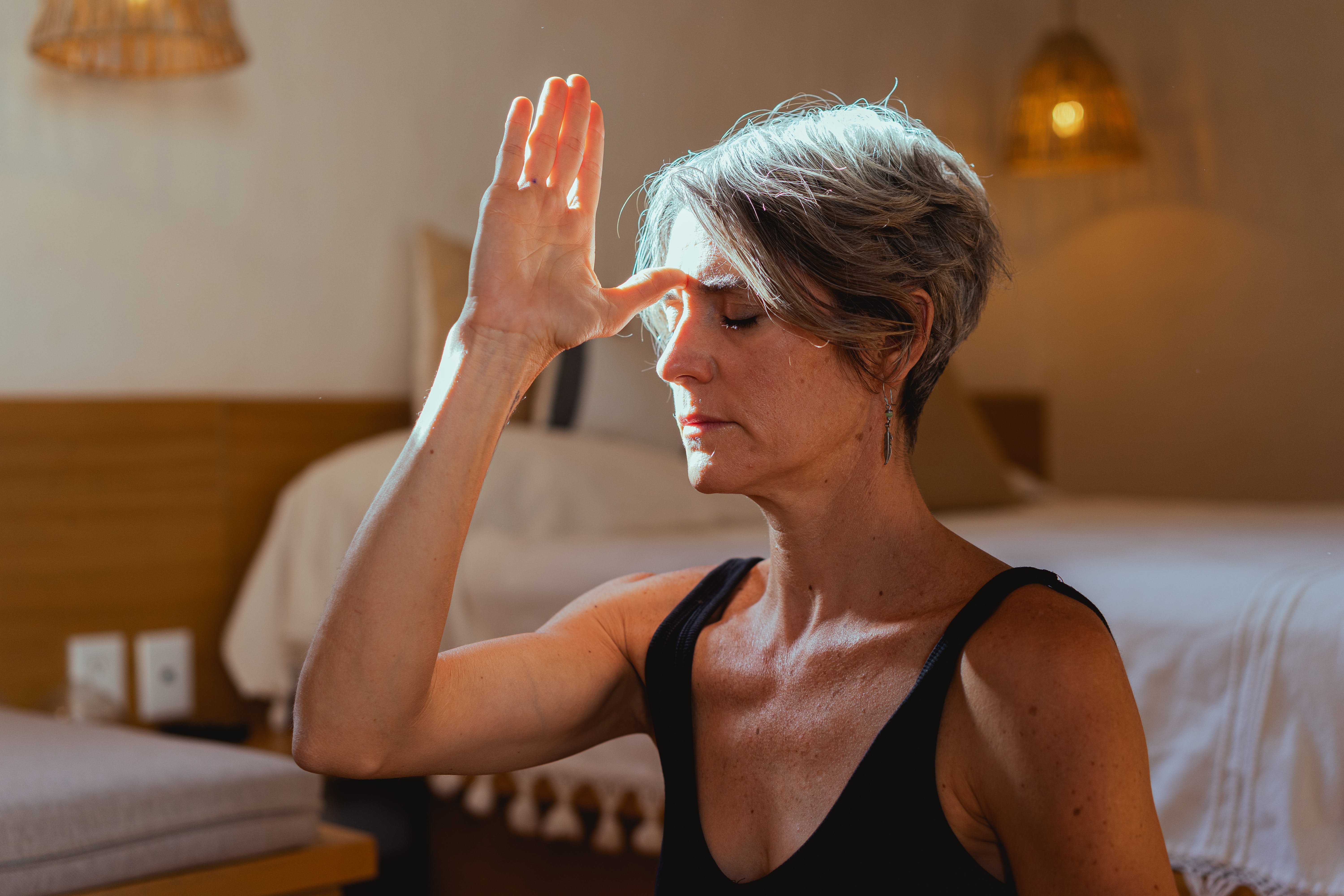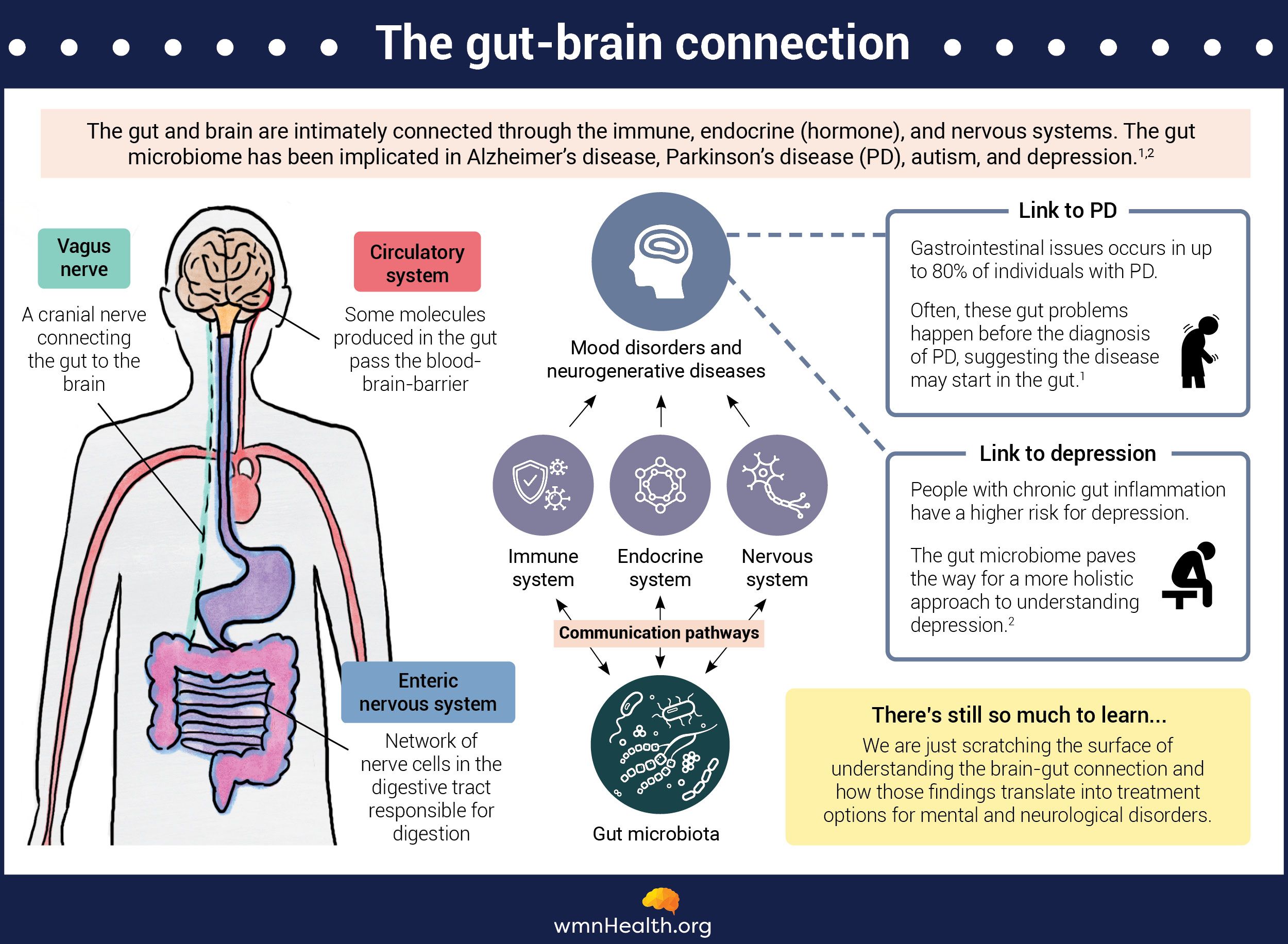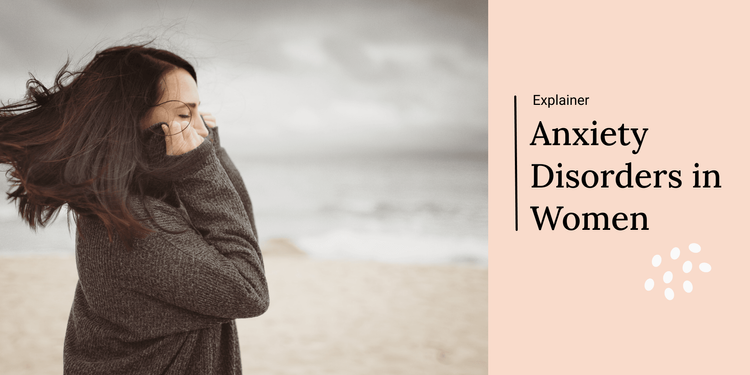
Nov 08, 2023, 5:00 am UTC
6 min
Created by
The Vagus Nerve: How to harness it for your mental health
This article covers:
- What is the mind-body connection, and how does it factor into anxiety?
- The gut-brain connection
- What is the vagus nerve?
- What is vagus nerve's role in stress and anxiety?
- How can you activate the vagus nerve using mind-body practices?
- Deep breathing
- Mindfulness and meditation
- Yoga
There is a surge in research on the vagus nerve — the longest of the 12 cranial nerves in the body. This growing interest reflects a recognition that the vagus is a vital connector between mind and body that profoundly impacts mood, emotions, and overall mental health. It also reflects the fact that the vagus can be targeted through an array of mind-body practices like breathing, meditation, and yoga that help reduce stress, regulate mood, and manage anxiety disorders — the most common mental condition in the world.
Anxiety diorders affect twice as many women as men during their lifetimes.
"There are all kinds of relaxation techniques out there,” says Bruce Friedman, PhD, Associate Professor in the Department of Psychology at Virginia Tech, where he studies the relationships between emotions, personality, and the autonomic nervous system in the Mind-Body Lab.
“But like any kind of exercise, you have to train,” he adds.
In addition to relaxation techniques, medical devices called vagal nerve stimulators, implanted in the body and approved for the treatment of epilepsy and severe depression, target the vagus nerve. Researchers are now experimenting with using non-invasive techniques like transcutaneous vagal nerve stimulation for the management of other mental and physical health conditions, including anxiety disorders.
In this article, we will delve into the intricacies of the vagus nerve, explore its link to anxiety, and discuss several mind-body methods to stimulate this vital nerve, such as deep breathing exercises, meditation, and yoga.
What is the mind-body connection, and how does it factor into anxiety?
The mind-body connection is the intricate relationship between our thoughts, emotions, and bodily responses.
For better or for worse, anxiety and anxiety disorders illustrate this intimate connection between our mental and physical states. Excessive and irrational fear and worry are signs of anxiety. But anxiety is more than just a feeling. It can trigger a cascade of physiological changes in the body, including heart palpitations, sweating, and shortness of breath.
Just as the emotions and thoughts associated with anxiety influence our bodily responses, bodily sensations can, in turn, impact our mental and emotional well-being. This bidirectional crosstalk between the mind and the brain is mediated by the autonomic nervous system, which is made up of two branches: the sympathetic and parasympathetic.
Stress and anxiety activate the sympathetic nervous system, commonly known as the "fight or flight" response. While this response is essential in times of danger, chronic activation can lead to adverse health consequences, including increased anxiety and even the development of anxiety disorders.
Conversely, the parasympathetic nervous system, responsible for calming the body and promoting relaxation, counteracts the sympathetic response. It is often thought of as the "rest and digest" response. The vagus nerve is the main component of the parasympathetic nervous system.
 One of the most exciting areas of research on the mind-brain connection involves the gut and the gut microbiome—the vast colonies of microbes that inhabit the digestive system. Neuroscientists are discovering how the gut microbiome is involved in both our mental and neurological health and disease. Infographic by Cat Lau. (References below.)
One of the most exciting areas of research on the mind-brain connection involves the gut and the gut microbiome—the vast colonies of microbes that inhabit the digestive system. Neuroscientists are discovering how the gut microbiome is involved in both our mental and neurological health and disease. Infographic by Cat Lau. (References below.)What is the vagus nerve?
The word “vagus” means “wanderer” in Latin, a reference to the ways the vagus nerve extends to most organ systems in the body. It acts as an information superhighway, extending from the brain to various organs in the chest and abdomen. In addition to regulating bodily functions, from the heart's beating to the movement of food to inflammation and the immune system, it serves as the principal communication pathway between the brain and the body.
Despite growing interest in the vagus nerve and efforts to develop ways to stimulate it, the nerve’s basic anatomy and how it encodes the information it relays to the brain is still a mystery. As a result, an effort is underway to map more than 100,000 individual nerve fibers that make up the vagus nerve and their connections throughout the body. Researchers are also looking at how the brain interprets signals from the vagus nerve and what those signals convey about the function of different body parts. Just this year, researchers found that individual nerve cells in the vagus encode three key features that the brain interprets: the organ, the tissue layer within the organ, and the type of stimulus, such as stretching of the lung or stomach.
This emerging understanding of the vagus nerve and the nature of mind-body signals may help scientists design ways to target specific pathways in the nervous system to treat health conditions.
What is vagus nerve's role in stress and anxiety?
Anxiety disorders involve dysregulation of the autonomic nervous system. This is often characterized as an “imbalance” between the parasympathetic and sympathetic branches. But Friedman says that idea needs to be updated.
This is often characterized as an "imbalance" between the parasympathetic and sympathetic branches of the autonomic nervous system. But Friedman says that idea needs to be updated.
"We used to use the term "autonomic imbalance." It came out around the turn of the 18th to 19th century," he says.
"The problem with that term is it implies there should always be this equal [participation of the two branches], which is not true. Every organ has its own specific, complex autonomic regulation. Even in the scientific literature, especially the psychological literature, you don't always see an appreciation for that," adds Friedman.
What studies have shown is that individuals with anxiety disorders often have reduced vagal tone, which refers to the vagus nerve's activity and efficiency in regulating bodily functions.
Decreased vagal tone—that is, reduced activity in the vagus nerve—is associated with increased heart rate, shallow breathing, and a higher susceptibility to stress responses — hallmarks of anxiety and anxiety disorders.
In contrast, increased vagal tone activates the parasympathetic nervous system (the “rest and digest” system), which helps calm the body after stress. A higher vagal tone indicates that your body can flexibly shift from the stress response to the relaxation response, and researchers have found a positive feedback loop between high vagal tone, positive emotions, and good physical health.
Vagal tone can’t be measured directly. Instead, other biological processes, such as heart rate variability (HRV), are used as an indirect indicator of vagal tone.
Friedman is a pioneer in using HRV to study and understand the autonomic nervous system activity and its relationship to our emotions. Several decades ago, he and others hypothesized that people with severe forms of anxiety would be low in this parasympathetic regulation of the heart—and, therefore, also have a reduced HRV—making them more prone to anxiety disorders like panic attacks.
"We thought poor emotional regulation, which seems to be really common across psychological disorders, might be one of the manifestations of reduced heart rate variability. And, in general, over the last 30 years, this has been a fairly consistent finding in people with severe forms of anxiety like panic disorder," he says.
Some consumer health technologies, such as the Apple Watch and Oura, maker of a “smart ring” sleep and activity tracker, monitor biometrics like heart rate, body temperature and blood oxygen. Oura monitors HRV and uses it to signal whether a person is stressed due to overtraining or other factors and to help them gauge their recovery.
These health technologies are taking HRV — and the science of the vagus nerve — mainstream. However, they aren't designed for neurofeedback training. Instead, HRV is meant to be used as an indicator of recovery status, overall health, and fitness level.
How can you activate the vagus nerve using mind-body practices?
Traditional interventions for anxiety, such as cognitive behavioral therapy, aim to help people harness the mind to reduce symptoms like intrusive thoughts and to improve emotional regulation. Those interventions are time-tested and effective.
However, researchers and mental health professionals are increasingly interested in using the mind-body connection to address anxiety disorders and other mental health conditions.
One way to tap into it is via the vagus nerve. Stimulating the vagus nerve through techniques like deep breathing exercises, mindfulness practices, meditation, and yoga can increase vagal tone and activate the parasympathetic nervous system to reduce the stress response, promote relaxation, and alleviate anxiety symptoms.
Deep Breathing
Deep, slow breathing techniques have long been associated with relaxation and stress reduction. Diaphragmatic breathing, also known as belly breathing, has been shown to reduce anxiety by activating the vagus nerve and triggering the parasympathetic response.
To practice diaphragmatic breathing, inhale deeply through your nose, filling your lungs with air and allowing your belly to expand. Your exhale should be long and slow. Repeat this cycle several times, paying attention to the sensation of your breath.
"There's a variety of different breathing exercises a person can do. The evidence suggests that the period of inhaling needs to be shorter than the period of exhaling to produce increases in heart rate variability," says Friedman.
Mindfulness and Meditation
Mindfulness and meditation practices are also effective ways to manage anxiety. These practices involve focusing on the present moment, cultivating a non-judgmental attitude, and fostering a sense of calmness.
Research shows that mindfulness and meditation activate the vagus nerve and increase vagal tone, promoting positive emotions, relaxation, and reduced anxiety symptoms.
"Meditation is a skill. It's not something that you learn overnight. But with practice, you're able to push those distracting, worrisome, anxiety-provoking, threatening thoughts out of consciousness and be in this present moment. Regular practice could certainly be beneficial in altering the mind-body part of the equation," says Friedman.
Yoga
Yoga, a mind-body practice that combines physical postures, breathing exercises, and meditation, offers a path to vagus nerve activation. Specific yoga postures, such as backbends and inversions, stimulate the vagus nerve directly, enhancing vagal tone and promoting relaxation. The breathing and mindfulness components of yoga indirectly influence vagal tone.
Regular yoga practice can provide a holistic approach to anxiety management, addressing both the physical and mental aspects of well-being.
Infographic References
- Morais, L.H., Schreiber, H.L. & Mazmanian, S.K. The gut microbiota–brain axis in behaviour and brain disorders. Nat Rev Microbiol 19, 241–255 (2021).
- Flux, M.C., and C.A. Lowry. Finding intestinal fortitude: Integrating the microbiome into a holistic view of depression mechanisms, treatment, and resilience, Neurobiology of Disease, Volume 135, 2020, 104578.



